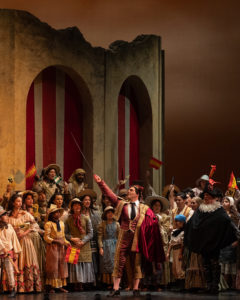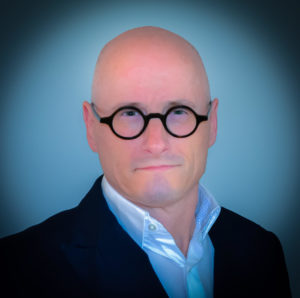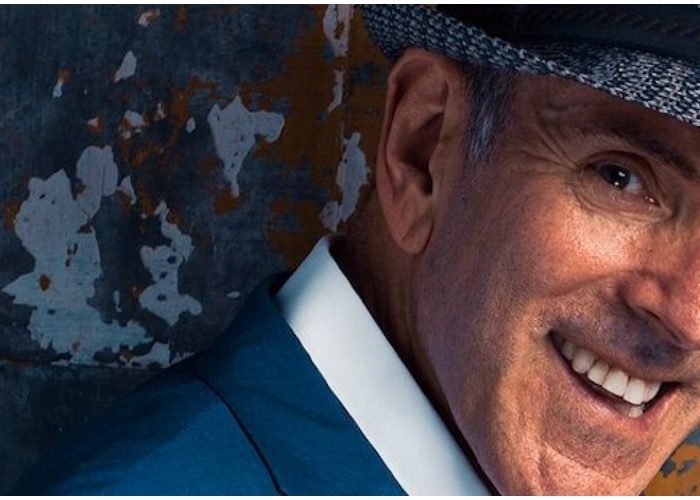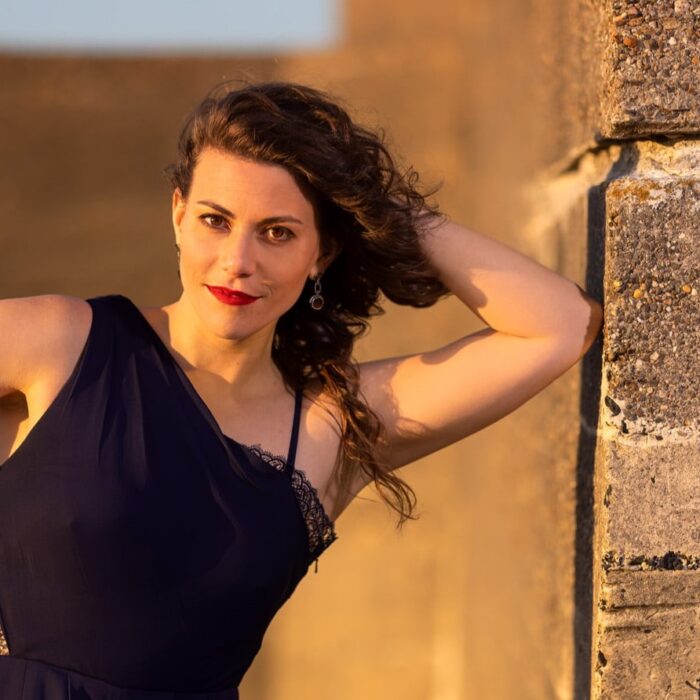
Opera In the Big Easy – New Orleans Opera Association Robert Lyall On Developing The City’s Rich Operatic Tradition
By Chris Ruel(Credit: Brittney Werner)
If you visit New Orleans today, you can pop into the Napoleon House, the supposed location in which the former emperor would live out his days in North America. The music that you’ll hear while sipping your Pimm’s Cup in the 200-year-old house-turned-bar is classical. Beethoven’s “Eroica” symphony is on repeat, after all, the maestro wrote it in honor of the Corsican.
Though known as being a French city, New Orleans was ruled by the Spanish for 40 years between 1763 and 1803. After the Vieux Carré (now commonly called the French Quarter) burned to the ground a few times, the Spaniards rebuilt the burgeoning city. But there were other, equally essential influencers who wove their music into the rich tapestry of New Orleans history; the indigenous and African cultures came together and mingled with those of the Europeans to form the musical gem that is the Crescent City we know today.
And, it all goes back to opera.
So, let’s take a musical journey from its very opening in 1796 to the present day with the General and Artistic Director of the New Orleans Opera Association, Maestro Robert Lyall. OperaWire spoke with Lyall to dig deeper into the history of opera in the Big Easy.
The First Opera in the U.S.
On Sunday, 22 May 1796, during a warm late-spring evening, a significant event in music history occurred in the city of New Orleans: the performance of the first documented opera in North America took place at the French-speaking Théâtre de la Rue St. Pierre. The opera was André Grétry’s “Sylvain.”
The theater, owned by two Parisians, Jean-Louis Henry and Louis-Alexandre Henry, opened four years earlier in 1792 and had an inauspicious start.
According to Rene J. Le Gardeur Jr.’s book, “The First New Orleans Theater, 1792-1803,” Baron Joseph Delfau de Pontalba wrote to the ex-governor of Louisiana regarding the theater. In the letter, he stated: “Two of the male actors are tolerable, the others bad; the actresses are fit to be run off [the stage] with a broom to their backs…”
The opening show is unknown, but it clearly had issues.
A professional troupe working in the city since 1790 was formally organized in 1794 and kept the French-speaking population entertained. Then along came “Sylvain,” a one-act opéra-comique composed by Grétry. The opera tells the story of Sylvain, a once-wealthy man who works as an impoverished farmer after being disinherited by his father for marrying a lower-class woman.
Haven’t heard of “Sylvain?” It’s obscure, no doubt, but at the time, it was one of Grétry’s greatest hits with 381 performances at the Opéra Comique. Since New Orleans was a cultural pipeline between Paris and North America, “Sylvain’s” arrival at Théâtre de la Rue St. Pierre made perfect sense.
Opera Blooms in Early New Orleans
Seven years following the 1792 founding of Théâtre de la Rue Saint Pierre, the Théâtre d’ Orléans became the reigning opera house in the city until the mid-19th century. In 1859, the native New Orleanian director of Théâtre d’ Orléans, Charles Boudousquié, decided it was time to part ways with his French employer, Pierre Davis. Boudousquié went on to build his own opera house, the famed French Opera House at the corner of Bourbon and Toulouse Streets.
“[The French Opera House] was the center of Creole cultural; it was the center of politics; it was the social center,” related Lyall. “It played a huge role in the life of New Orleans for the 60 years that it towered over the French Quarter. Almost all of the Italian classics from the Bel Canto era premiered in New Orleans and were performed in French. So, you find French versions of all of that Italian body of opera because French was the audience’s native language.”
New Orleans soon became the opera center in the United States, and as such, European touring groups launched their North American tours at The French Opera House, bringing along with them the big names. After wrapping up runs in New Orleans, the touring companies would head off to New York or other cities (Imagine that; New York taking second or third place when it came to prestige in the opera world!).
Unfortunately, the French Opera House burned to the ground in 1919. During its six decades in existence, the opera house presented 19 American premieres, including: Saint-Saëns’ “Samson et Dalila,” Massenet’s “Le portrait de Manon (a precursor to the composer’s masterpiece “Manon”),” a second Massenet opera, “Cendrillon,” and the venerable “Adriana Lecouvreur” by Francesco Cilea.
Co-Existing and Cross-Pollinating: Opera In a Jazz City
When you think about New Orleans’ music today, the first genre that pops to mind is jazz. How is it that the most vibrant opera city in North America during the 19th century became the jazz city of the 20th?
Maestro Lyall recounted how the jazz scene in New Orleans traces its roots to the city’s operatic history.
“The word jazz derives from the word Jezebel. Storyville was the red light district in New Orleans, and the piano players in the houses of prostitution were very well-known because most of them were classically trained. And, so, when they started playing their ‘Jezebel music,’ the term morphed into the word ‘jazz.’
“African culture became a part of the musical fabric of New Orleans. And of course, they all are absorbed by each other in terms of jazz, American music, and Creole music. The bedrock foundation for all of this was opera, because we had the magnificent opera house, we had its European culture, and you had a lot of classically trained musicians living here, playing for the opera house and various concerts. So it’s a fascinating cultural history of which opera is the centerpiece.”
Today, the two musical forms are often brought together by the New Orleans Opera. Lyall gave two examples: Terence Blanchard’s “Champion: An Opera in Jazz,” and “A Streetcar Named Desire,” a collaboration between André Previn and Phillip Littel.
Native New Orleanian trumpet player Terence Blanchard’s “Champion: An Opera in Jazz” premiered in June 2013 at the Opera Theatre of Saint Louis and features video elements with soloists, a jazz trio, orchestra, and Gospel chorus. The opera went on to become a finalist for the International Opera Award in 2014. The production came to New Orleans in May of 2018.
“[Blanchard] took the historic incident of the world welterweight boxing championship in which Emile Griffith killed his opponent, Benny Peretti. [Griffith] hit him in the head so many times that he went into a coma from which he never recovered. So, that was a famous sports incident. And Terence chose it as a subject to retell Emile Griffith’s life through that event and through his musical language.”
All composers use musical languages based upon their culture and influences. In both Blanchard’s “Champion” and Previn’s “Streetcar,” jazz is the lingua franca.
“We were the first company after the San Francisco premiere to present ‘Streetcar.’ Of course, the play is an iconic New Orleans piece. To me, the fun of that is that you had a prominent, classically trained and leading conductor in Andre Prévin, who was also known for writing jazz and musical theater pieces. He was truly cross-cultural within those parallel tracks. And he then had to choose a musical language for what is New Orleans, one of its most celebrated theater pieces.
“So, it’s interesting when you look at, you know, what would influence an individual, a creative individual to say the way I would approach the complexities of operatic treatment of a subject could be through this language or this language or this language or this language or perhaps all of them.”
A Commitment to New Opera & Audience Building
The New Orleans Opera honors its past by running standard repertoire on its mainstage, while looking to the future with its Opera Chamber “Detour” Series.
In November, the company will be staging “The Falling and the Rising,” a new opera by composer Zach Redler and librettist Jerre Dye. The opera tells of a soldier recovering from a roadside attack. The opera’s co-creator and executive producer is Sargeant First Class Ben Hilgert.
“Not only are they new and frequently unknown and or unusual works, but they are designed to appeal to people that had never developed a taste for traditional opera,” Lyall noted. “They are designed to appeal to people looking for a new operatic experience.”
Regarding, “The Rising and the Falling” production, Lyall noted a hot topic in contemporary opera.
“A very common trend these days are war-related themes because we have now two generations of people from the Vietnam War through Iran, Iraq, and Afghanistan, and they all return from the theaters of war with often a common experience that can be very damaging to them.”
In addition to adding new operas into the repertoire, the New Orleans Opera conducts a series of opera events known as Opéra Nouvelle. These events take place at different, non-theater venues within the city, such as the New Orleans Museum of Art’s Sculpture Gardens. Both the Opera Chamber “Detour” Series and Opéra Nouvelle are free.
The New Orleans Opera also works directly with schools to bring opera into the classroom and the classroom into the opera house.
Lyall stated that he finds students to be highly receptive when exposed to a full array of music, noting that the kids don’t come with many of the biases adults carry regarding the art form. The organization has engaged in educational outreach for many years, but over time, the programs have grown and flourished.
“We’re getting even better attendance at our student dresses and certainly much greater involvement with the school system. We’re working with the teachers and their lesson plans and saying, for your musical component, do you have some room for opera? Of course, they love that because opera is theater, and you’ve got the kids on their feet working and being truly engaged. I do think that it is beginning really to pay off for us,” Lyall said.
In the past dress rehearsal events for students, the kids would watch stripped-down versions without the orchestra or chorus. Now, however, they get the full experience of attending a live opera.
“The covers or substitutes were singing an hour-long version of whatever the company was doing. Well, quite frankly, I hate that kind of stuff,” “Lyall noted. “I think if you want to introduce young people to opera, give them the whole cake, let them come to a rehearsal with the full symphony orchestra, with the full chorus, with lighting, costumes–all the bells and whistles so that they get more than just a taste of opera. So, we started opening our final dress rehearsal and calling it ‘A Student Night Out.’ I can tell you, after sitting through a three-hour opera, they’re on their feet screaming applause at the stage; they really love the experience.”
Katrina
The opera repertoire is chock full of tragedy, but, unfortunately, tragedy hasn’t always happened onstage at New Orleans’ opera houses.
Théâtre d’Orléans burned down in 1866. The French Opera House succumbed to fire, as well, in 1919. 86-years later, in August of 2005, Hurricane Katrina sent floodwater pouring into the city as levees broke, and pumps failed in multiple locations around the city. The home of the New Orleans Opera, the Mahalia Jackson Theater for the Performing Arts, took a severe hit. Ironically, the company was closing out its performance of the Ring Cycle. “Götterdämmerung,” the opera was canceled, as a true-to-life version immersed the city, causing death, destruction, and misery. The New Orleans Opera moved the productions to Tulane University’s McCallister Hall as both the theater and the city began the long process of rebuilding.
Coming to the aid of the organization, and its city, were many of the biggest names in opera.
“I happened to know Plácido Domingo, and so I appealed to Plácido to come join us with a gala concert. Now, what’s special fun is that Plácido began his professional career singing with the New Orleans Opera,” Lyall noted. “So, he’s had a long, long association. And he was quite generous and quite interested in doing this.
“We ended up moving it to what was then the new basketball arena. And it resulted in the largest single operatic event in the history of New Orleans,” he continued. “It was a special occasion. I invited lots of stars; we had a fantastic lineup of operatic dignitaries, such as Denyce Graves, Paul Groves, and Nathan Gunn, as well as a very large chorus. We also got the orchestra in on this as they were in the process of reorganizing. We had a wonderful evening, which was called a Night for New Orleans.
“I’m happy to say that we have only recently entered an era where we do not reference everything as post-Katrina or pre-Katrina. You know, when you’re living in that mindset, then you’re always saying, well, before Katrina, we did this, or you’re having conversations with the partners and with management saying, well, for post-Katrina, we need to do this. We are in a much more settled world, although not perfectly so. You know, there are still the hurricanes, and they are not great fans of opera.”
After 223 years of opera in the Big Easy, the New Orleans Opera continues to bring the art form to southern Louisiana.
The company opened its 2019-2020 mainstage season with “Carmen” in early-October. Tchaikovsky’s “Joan of Arc” is slated for February 2020, and Mozart’s “The Magic Flute” closes out the season in May. The Opera Chamber “Detour” Series will present “The Falling and the Rising” in November of this year, and “Charlie Parker’s Yardbird” in April 2020.
In between, there will be numerous Opèra Nouvelle events, and the company will continue to bring its robust educational programs to what will become the next generation of operagoers in the Big Easy and beyond.
As an aside, the New Orleans Opera holds a special place in this author’s heart. Not only was the city the first to stage an opera in North America, but it’s also the city in which I saw my first live opera.
Look where that led.



